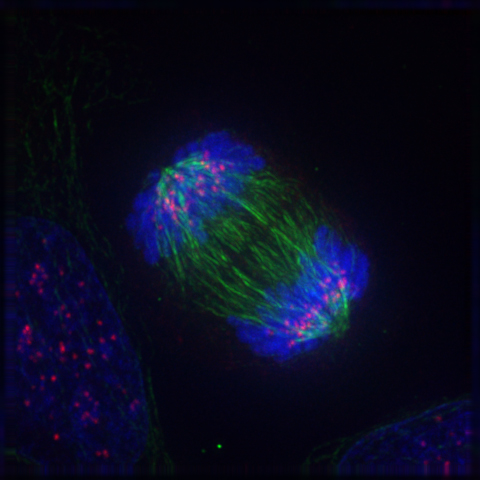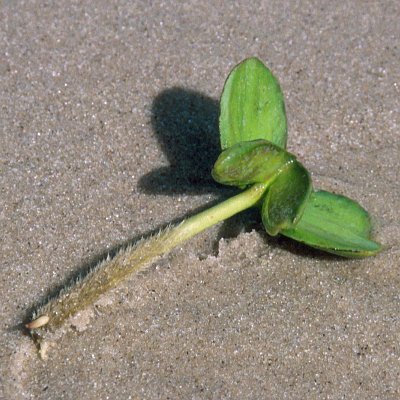|
Abílio Fernandes
Abílio Fernandes (19 October 1906 Guarda, Portugal – 16 October 1994 Coimbra), was a Portuguese botanist and taxonomist from the Botanical Institute at the University of Coimbra who was married to Rosette Mercedes Saraiva Batarda (1916–2005), another Portuguese botanist and taxonomist. Fernandes was a student of Aurélio Quintanilha (1892–1987), botanist and geneticist. He is noted for his work on Amaryllidaceae, and compiling floras of Portugal, Macaronesia and Tropical Africa. He was the son of José Fernandes (1880-) and Maria Augusta Fernandes (1880–). Fernandes was Quintanilha's student during the academic year 1926–27 and was invited to become teaching assistant in 1927. He became interested in the number and form of chromosomes in different species, later specialising in cyto-systematics, founding and becoming head of a research programme on cytotaxonomy at the University of Coimbra, where he stayed for the remainder of his career. Quintanilha stated that Fe ... [...More Info...] [...Related Items...] OR: [Wikipedia] [Google] [Baidu] |
Abílio Fernandes01
Abilio may refer to: * Abilio James Acosta (born 1971), American journalist * Abílio Brandão (fl. 1948), Portuguese sports shooter * Abílio Cabral (born 1960), Angolan boxer * Abílio Cossa (1922–2003), Mozambican journalist and writer * Abílio Duarte (1931–1996), Cape Verdean nationalist and politician * Abilio Diniz (born 1936), Brazilian businessman * Abilio Estévez (born 1954), Cuban novelist and playwright * Abílio Fernandes (1906–1994), Portuguese botanist and taxonomist * Abilio Manuel Guerra Junqueiro (1850–1923), Portuguese civil servant * Abílio Novais (born 1967), Portuguese footballer * Abílio Vieira (born 1999), Timorese football forward * Abílio (footballer) (Abílio Neves dos Reis, born 1975), Brazilian football forward * Tanela (Abílio Filipe Antunes Teixeira, born 1988), Portuguese footballer {{given name Portuguese masculine given names ... [...More Info...] [...Related Items...] OR: [Wikipedia] [Google] [Baidu] |
Cytotaxonomy
Cytotaxonomy is the classification of organisms using comparative studies of chromosomes during mitosis. Description Cytotaxonomy is a branch of taxonomy that uses the characteristics of cellular structures to classify organisms. In cytotaxonomy, the chromosomal configuration of an organism is the most widely used parameter to infer the relationship between two organisms. The inference of species relationships is based on the assumption that closely related species share similar characteristics in their chromosomal setup (referred to as karyotype). By analysing the similarities and differences in the chromosomes, karyotype evolution and species evolution can be reconstructed. The number, structure, and behaviour of chromosomes is of great value in taxonomy, with chromosome number being the most widely used and quoted character. Chromosome numbers are usually determined at the metaphase stage during mitosis. Usually, the diploid chromosome number (2n) is referenced, unless dealing w ... [...More Info...] [...Related Items...] OR: [Wikipedia] [Google] [Baidu] |
People From Guarda, Portugal
A person ( : people) is a being that has certain capacities or attributes such as reason, morality, consciousness or self-consciousness, and being a part of a culturally established form of social relations such as kinship, ownership of property, or legal responsibility. The defining features of personhood and, consequently, what makes a person count as a person, differ widely among cultures and contexts. In addition to the question of personhood, of what makes a being count as a person to begin with, there are further questions about personal identity and self: both about what makes any particular person that particular person instead of another, and about what makes a person at one time the same person as they were or will be at another time despite any intervening changes. The plural form "people" is often used to refer to an entire nation or ethnic group (as in "a people"), and this was the original meaning of the word; it subsequently acquired its use as a plural form of ... [...More Info...] [...Related Items...] OR: [Wikipedia] [Google] [Baidu] |
Portuguese Taxonomists
Portuguese may refer to: * anything of, from, or related to the country and nation of Portugal ** Portuguese cuisine, traditional foods ** Portuguese language, a Romance language *** Portuguese dialects, variants of the Portuguese language ** Portuguese man o' war, a dangerous marine cnidarian that resembles an 18th-century armed sailing ship ** Portuguese people, an ethnic group See also * * ''Sonnets from the Portuguese'' * "A Portuguesa", the national anthem of Portugal * Lusofonia * Lusitania Lusitania (; ) was an ancient Iberian Roman province located where modern Portugal (south of the Douro river) and a portion of western Spain (the present Extremadura and the province of Salamanca) lie. It was named after the Lusitani or Lusita ... * {{disambiguation Language and nationality disambiguation pages ... [...More Info...] [...Related Items...] OR: [Wikipedia] [Google] [Baidu] |
Lamiaceae
The Lamiaceae ( ) or Labiatae are a family of flowering plants commonly known as the mint, deadnettle or sage family. Many of the plants are aromatic in all parts and include widely used culinary herbs like basil, mint, rosemary, sage, savory, marjoram, oregano, hyssop, thyme, lavender, and perilla, as well as other medicinal herbs such as catnip, salvia, bee balm, wild dagga, and oriental motherwort. Some species are shrubs, trees (such as teak), or, rarely, vines. Many members of the family are widely cultivated, not only for their aromatic qualities, but also their ease of cultivation, since they are readily propagated by stem cuttings. Besides those grown for their edible leaves, some are grown for decorative foliage. Others are grown for seed, such as ''Salvia hispanica'' (chia), or for their edible tubers, such as ''Plectranthus edulis'', ''Plectranthus esculentus'', '' Plectranthus rotundifolius'', and '' Stachys affinis'' (Chinese artichoke). Many are also grown orn ... [...More Info...] [...Related Items...] OR: [Wikipedia] [Google] [Baidu] |
Verbenaceae
The Verbenaceae ( ), the verbena family or vervain family, is a family of mainly tropical flowering plants. It contains trees, shrubs, and herbs notable for heads, spikes, or clusters of small flowers, many of which have an aromatic smell. The family Verbenaceae includes 32 genera and 800 species. Phylogenetic studies have shown that numerous genera traditionally classified in Verbenaceae belong instead in Lamiaceae. The mangrove genus ''Avicennia'', sometimes placed in the Verbenaceae or in its own family, Avicenniaceae, has been placed in the Acanthaceae. Economically important Verbenaceae include: * Lemon verbena (''Aloysia triphylla''), grown for aroma or flavoring * Verbenas or vervains (''Verbena''), some used in herbalism, others grown in gardens Taxonomy Tribes and genera in the family and their estimated species numbers: Casselieae (Schauer) Tronc. * '' Casselia'' Nees & Mart. - 6 species * '' Parodianthus'' Tronc. - 2 species * ''Tamonea'' Aubl. - 6 species Ci ... [...More Info...] [...Related Items...] OR: [Wikipedia] [Google] [Baidu] |
Avicenniaceae
''Avicennia'' is a genus of flowering plants currently placed in the bear's breeches family, Acanthaceae. It contains mangrove trees, which occur in the intertidal zones of estuarine areas and are characterized by its "pencil roots", which are aerial roots. They are also commonly known as ''api api'', which in the Malay language means "fires", a reference to the fact that fireflies often congregate on these trees. Species of ''Avicennia'' occur worldwide south of the Tropic of Cancer. The taxonomic placement of ''Avicennia'' is contentious. In some classifications, it has been placed in the family Verbenaceae, but more recently has been placed by some botanists in the monogeneric family Avicenniaceae. Recent phylogenetic studies have suggested that ''Avicennia'' is derived from within Acanthaceae, and the genus is included in that family in the Angiosperm Phylogeny Group system. Designation of species is made difficult by the great variations in form of ''Avicennia marina''. ... [...More Info...] [...Related Items...] OR: [Wikipedia] [Google] [Baidu] |
Flora Zambesiaca
''Flora Zambesiaca'' is an ongoing botanical project aimed at achieving a full account of the flowering plants and ferns of the Zambezi River basin covering Zambia, Malawi, Mozambique, Zimbabwe, Botswana and the Caprivi Strip, and is published by the Royal Botanic Gardens, Kew. The work is published in parts or whole volumes as and when the relevant families are completed, and is currently (2012) over the halfway mark. Some 24 500 plant species have been described so far. The majority of the line illustration plates in the first volume were by Miss L. M. Ripley and Miss G. W. Dalby. The ''Flora Zambesiaca'' project was set in motion in 1950 by Arthur Wallis Exell when he returned to the British Museum from his wartime activities with the Government Communications Headquarters at Bletchley Park Bletchley Park is an English country house and estate in Bletchley, Milton Keynes ( Buckinghamshire) that became the principal centre of Allied code-breaking during the Second World ... [...More Info...] [...Related Items...] OR: [Wikipedia] [Google] [Baidu] |
Cytogenetics
Cytogenetics is essentially a branch of genetics, but is also a part of cell biology/cytology (a subdivision of human anatomy), that is concerned with how the chromosomes relate to cell behaviour, particularly to their behaviour during mitosis and meiosis. Techniques used include karyotyping, analysis of G-banded chromosomes, other cytogenetic banding techniques, as well as molecular cytogenetics such as fluorescent ''in situ'' hybridization (FISH) and comparative genomic hybridization (CGH). History Beginnings Chromosomes were first observed in plant cells by Carl Nägeli in 1842. Their behavior in animal (salamander) cells was described by Walther Flemming, the discoverer of mitosis, in 1882. The name was coined by another German anatomist, von Waldeyer in 1888. The next stage took place after the development of genetics in the early 20th century, when it was appreciated that the set of chromosomes (the karyotype) was the carrier of the genes. Levitsky seems to have been t ... [...More Info...] [...Related Items...] OR: [Wikipedia] [Google] [Baidu] |
Tropical Africa
Although tropical Africa is mostly familiar to the West for its rainforests, this biogeographic realm of Africa is far more diverse. While the tropics are thought of as regions with hot moist climates, which are caused by latitude and the tropical rain belt, the geology of areas, particularly mountain chains, and geographical relation to continental and regional scale winds impact the overall areas , also, making the tropics run from arid to humid in West Africa. The area is currently experiencing the negative effects of rapid human population growth.Zinkina J., Korotayev A.br>Explosive Population Growth in Tropical Africa: Crucial Omission in Development Forecasts (Emerging Risks and Way Out). ''World Futures'' 70/2 (2014): 120–139 Overview Tropical rainforests are moist forests of semi-deciduous plants distributed across nine West African countries. Institute for Sea Research conducted a temperature record dating back 700,000 years. Several conservation and development dem ... [...More Info...] [...Related Items...] OR: [Wikipedia] [Google] [Baidu] |
Guarda, Portugal
Guarda () is a city and a municipality in the District of Guarda and the capital of the Beiras e Serra da Estrela sub-region in Centro Region, central Portugal. The population in 2021 was 40,126, in an area of with 31,224 inhabitants in the city proper in 2006. Founded by King Sancho I of Portugal, Sancho I in 1199, Guarda is the city located at the highest altitude in Portugal ( Height above sea level, a.s.l.) and one of the most important cities in the Portuguese region of Beira Alta Province, Beira Alta. Serra da Estrela, the highest mountain range in continental Portugal, is partially located in the district. The city is served by national and international trains on the Beira Alta and Baixa railway lines. The present mayor is Sérgio Costa, as an indepdent. The municipal holiday is November 27. Guarda is known as the "city of the five F's": ''Farta'', ''Forte'', ''Fria'', ''Fiel'' e ''Formosa'' - abundant (or totally satisfied), strong, cold, loyal and beautiful. The explanat ... [...More Info...] [...Related Items...] OR: [Wikipedia] [Google] [Baidu] |

_1938.jpg)

_W_IMG_9162.jpg)



